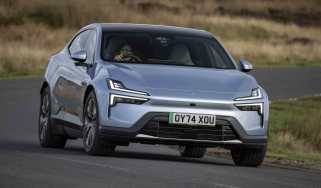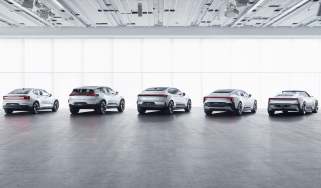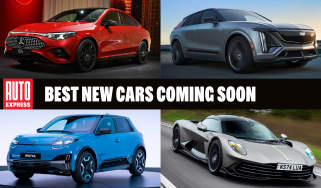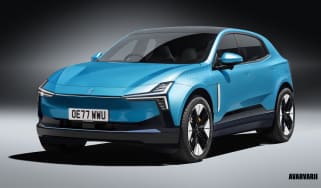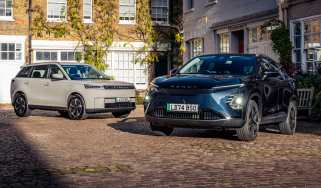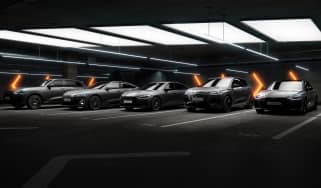Polestar unveils Tesla as number one target of new growth plan
With new models, dealer growth and Tesla in its sights, Polestar’s new CEO says the fightback has begun
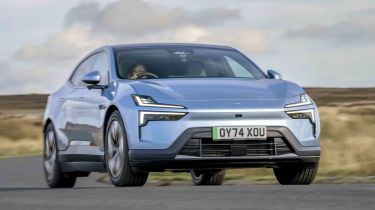
Polestar boss Michael Lohscheller is bullish that the EV start-up will survive the next five years, due to its ongoing new-car offensive, Tesla-targeting marketing and green shoots in its quarterly results.
Sitting down with the CEO at the FT’s Future of the Car summit, Auto Express asked why loss-making Polestar – whose share price remains marooned just above $1 (76p), about 300 times lower than Tesla’s – would still be here in 2030?
“Because we have fantastic cars, we focus on inspiring design, great performance and sustainability,” he shot back. “We have access to the best technology in the world and we focus on the right execution.”
Lohscheller, who joined the company in autumn 2024 tasked with turning Polestar around, has delivered some green shoots in his second quarter as boss. Sales rose 76 per cent with the Polestar 4 coupe-SUV and Polestar 3 large SUV gaining a foothold in the EV market – but remain modest: just 12,306 cars were delivered.
Polestar’s number one target: Tesla
Polestar is gunning for Tesla in the US, offering customers who switch allegiance a $5,000 incentive. Would Lohscheller do the same in Europe?
“We have various campaigns in place, sometimes specifically addressing Tesla customers,” he told us. “They’re interesting [to us] because they're early adopters who know EV technology, they know charging.” He cites a campaign in Norway that, through clever use of fonts, looked like the word ‘Tesla’ in Norwegian but actually asked: have you tested a Polestar?
But why would a Tesla customer come to Polestar, especially given Elon Musk’s brand has built its own proprietary charging network?
“We have [access to that] in many countries: charging is not a big issue anymore,” he retorts, citing a deal for Polestar drivers to use the network. “So why do they come to us? They definitely say they like the design, performance and sustainability. And there are many Teslas out there: do you want to drive a car which everybody else is driving?”
New products – and the right ones – coming thick and fast
The Polestar 7 – a compact SUV – is being fast-tracked to market, pushing the open-top 6 down the pecking order. For the first time, this Polestar won’t be produced in China or the United States.
“We have decided to localise [Polestar 7 production] in Europe because Europe is our strongest market,” said the Polestar boss. “Not only because of tariffs, but it makes sense to have it here. We will actually announce a specific location in a few weeks time.” The company outsources its manufacturing to Volvo and Geely, and the choice will be between Volvo plants in Sweden or Ghent, Belgium.
Every current Polestar sits on a different platform, which goes completely against the industry logic of maximising scale. The forthcoming 7 will be based on a new global architecture, co-developed with Geely and Volvo, an iteration of which will almost certainly underpin the replacement for the Volvo EX40.
“We have access to probably the best EV technology in the world. So how about we integrate this in a group architecture, and it’s our intention to use it and harmonize our platforms over time,” confirmed the boss.
The new platform will be able to underpin low-riding saloons and high-riding crossovers, and will have the flexibility to stretch length, track and wheelbase to cover all Polestar’s core models.
“You also need to have the software stacks and central core compute [the network of ultra-fast processors]. All this can be done but it needs to be well planned and executed,” Polestar’s boss told us. “It took years for the companies who have done it.”
Will Polestar rip up its illogical naming?
Lohscheller confirms that the compact SUV will be the smallest Polestar: he has no intention of launching a supermini-sized car below it. Even though it will be launched ahead of the 6, scuppering Polestar’s consecutive numbering convention (like Apple iPhones), don't expect any immediate changes to the system.
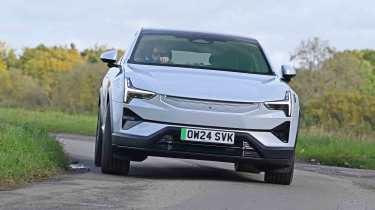
“It does make sense to call the Polestar 7 the 7 even though the Polestar 6 will come at a later stage,” said Lohscheller.
Unpicking the disparate numerical order – not arranged by size as per the BMW 1 to 7-series – will be tricky given that cars are replaced at different frequencies and two cars could never share the same showroom badge.
One thing is for sure: the new boss disapproves of the naming strategy. “We discussed it when I came in,” he admitted. “[Once these two cars are launched] we have a super-strong portfolio, and then you talk about successors. But don't expect the Polestar 15 to happen!”
So could Polestar switch to names instead to enable a reordering? “No, the brand is more important. We just have a few cars so it's not that confusing.”
Flagship Polestar 5 sedan – and next 2 to follow
The second-generation Polestar 2 will be the first Polestar to be replaced, and it’s likely to retain its high-riding saloon bodystyle while growing in size, Lohscheller confirmed, addressing criticism of its shortage of rear-seat space.
But the next new Polestar – coming this year – is the flagship GT, the 5. It’s a very different to Polestar’s other saloon – the 2 – packing high-performance motors and big, flagship positioning. “It’s super high end with a bonded aluminum [chassis], 800 volts, super high performance. Fantastic, I like the car a lot. But we need more volume.”
Dealers are the secret sauce driving growth
Lohscheller believes the biggest change in “execution” he’s made is investing in the dealer network. Polestar sales were initially online only and without discounts: the new CEO is determined to attract new dealer partners and grow the retail base to the correct size, to give customer prospects a focal point for a test drive, to find out information on the technology and finance offers and to cut a deal.
The UK is driving Polestar’s growth: it was the brand’s biggest global market in the first three months of 2025, accounting for 28 per cent of sales. In contrast the US contributes just 11 per cent and China is even smaller, despite the company being owned by Geely: the big problem is that it’s perceived as a Scandinavian brand with unusual, minimalist design rather than being seen as a domestic one. Why is the comparatively small UK the growth driver?
“We do very well in [company car sales], which is of highest importance here in the UK. I think we’ve also found the sweet spot between price premium and volume: we could make every car 20 per cent more expensive but then you don’t have those volume results.”
The boss has met all of the UK’s 10 retailers and is recruiting to expand this to 17 nationwide. Put it all together and the brand is creating “momentum”, said Lohscheller.
And will this grow the share price?
“It's relatively simple, in my view: it’s about consistency of action. I came in September. We analysed the situation in 100 days, outlined the clear plan. Now we execute.
“Quarter one was a very, very good start but it’s only a quarter. Investors ask: ‘what about the second quarter [and more besides]?’ Once I think they see this is going to take off, the stock price will amend accordingly. But it's also fair to say we operate in an environment which is not that easy!”
Now you can buy a car through our network of top dealers around the UK. Search for the latest deals…
Find a car with the experts





